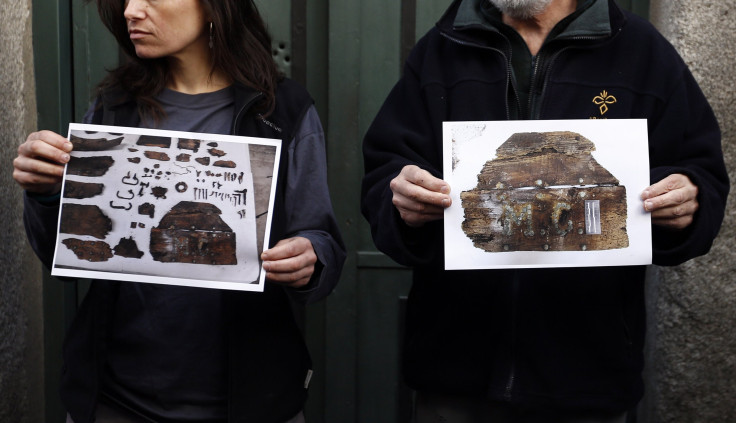
Scientists in Madrid rediscovered the bones of author Miguel Cervantes, author of Don Quixote. Researchers were confident that the remains lay near Madrid's Convent of the Barefoot Trinitarians, but they had no idea where on the grounds they were buried. Cervantes died in 1616, and was buried near the convent soon thereafter. However, his remains were moved decades later when the Barefoot Trinitarians remodeled.
Dozens of researchers used 3D scanners and radar to search below ground in the vicinity of a suspected burial site, according to the B.B.C.’s Camila Ruz. Finally, they found a buried crypt and opened a half-rotted wooden coffin marked “M.C.” The search cost around $170,000 dollars, according to the Olive Press.
The author, whose full name was Miguel de Cervantes Saavedra, died from cirrhosis of the liver, though probably not because of drinking. he was extremely productive at the end of his life, finishing “The Ingenious Gentleman Don Quixote of La Mancha”, and epic that’s widely viewed as the first modern novel. In Cervantes’ writing, he saw death as a liberation without remedy. In “Don Quixote,” Cervantes wrote many musings on the logistics and philosophical meanings of death.
1) Death as an inevitability: “There is a remedy for all things but death, which will be sure to lay us out flat some time or other.”
2) On how to live: “When life itself seems lunatic, who knows where madness lies? Perhaps to be too practical is madness. To surrender dreams -- this may be madness. Too much sanity may be madness -- and maddest of all: to see life as it is, and not as it should be!”
3) Sleeping is like death: There’s just one thing wrong with sleep, I’ve heard, and it’s that it seems too much like death, well there’s not much difference between a sleeping man and a dead one.”
4) Death as a cure: “There is no recollection which time does not put an end to, and no pain which death does not remove.”
5) An eerie and delirious passage: “For me alone Don Quixote was born and I for him. His was the power of action, mine of writing. Only we two are at one, despite that fictitious and Tordillescan scribe who has dared, and may dare again, to pen the deeds of my valorous knight with his coarse and ill-trimmed ostrich feather. This is no weight for his shoulders, no task for his frozen intellect; and should you chance to make his acquaintance, you may tell him to leave Don Quixote's weary and mouldering bones to rest in the grave, nor seek, against all the canons of death, to carry him off to Old Castile, or to bring him out of the tomb, where he most certainly lies, stretched at full length and powerless to make a third journey, or to embark on any new expedition."
© 2025 Latin Times. All rights reserved. Do not reproduce without permission.




